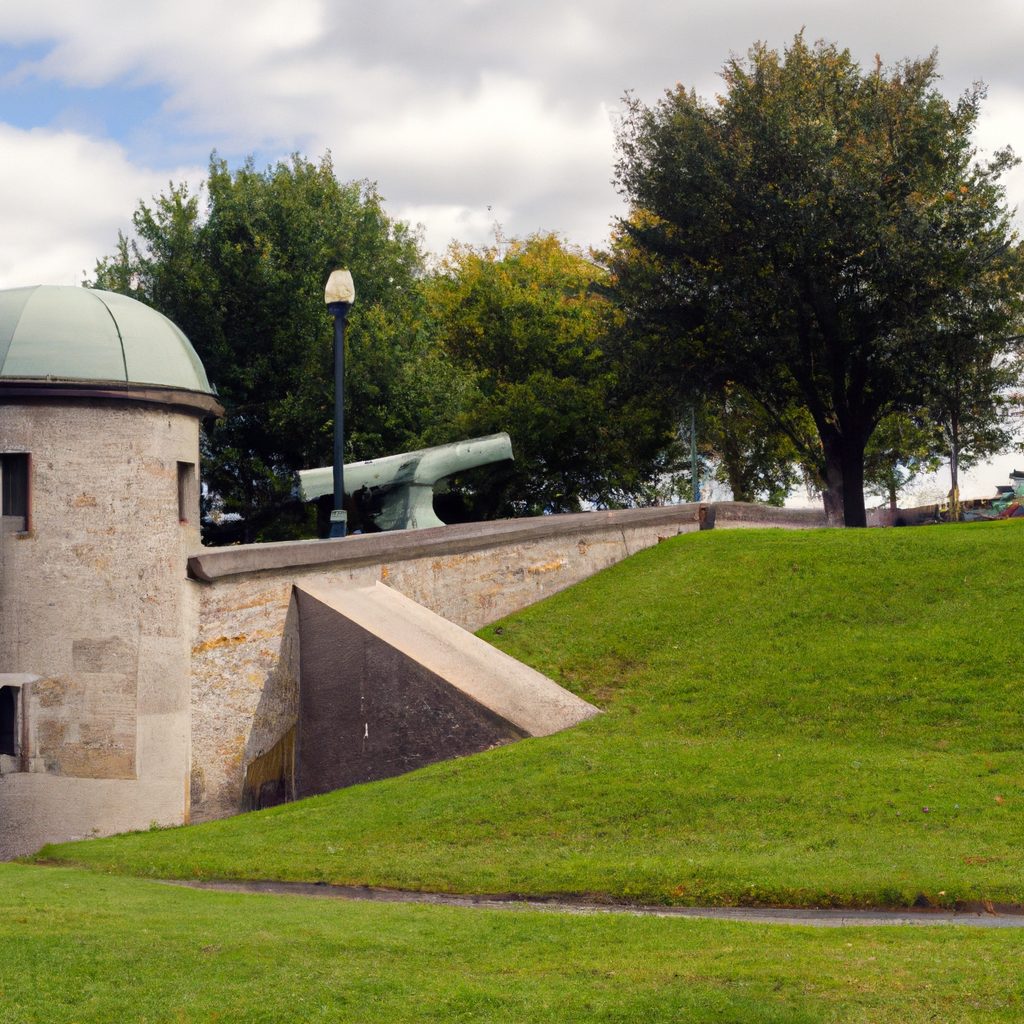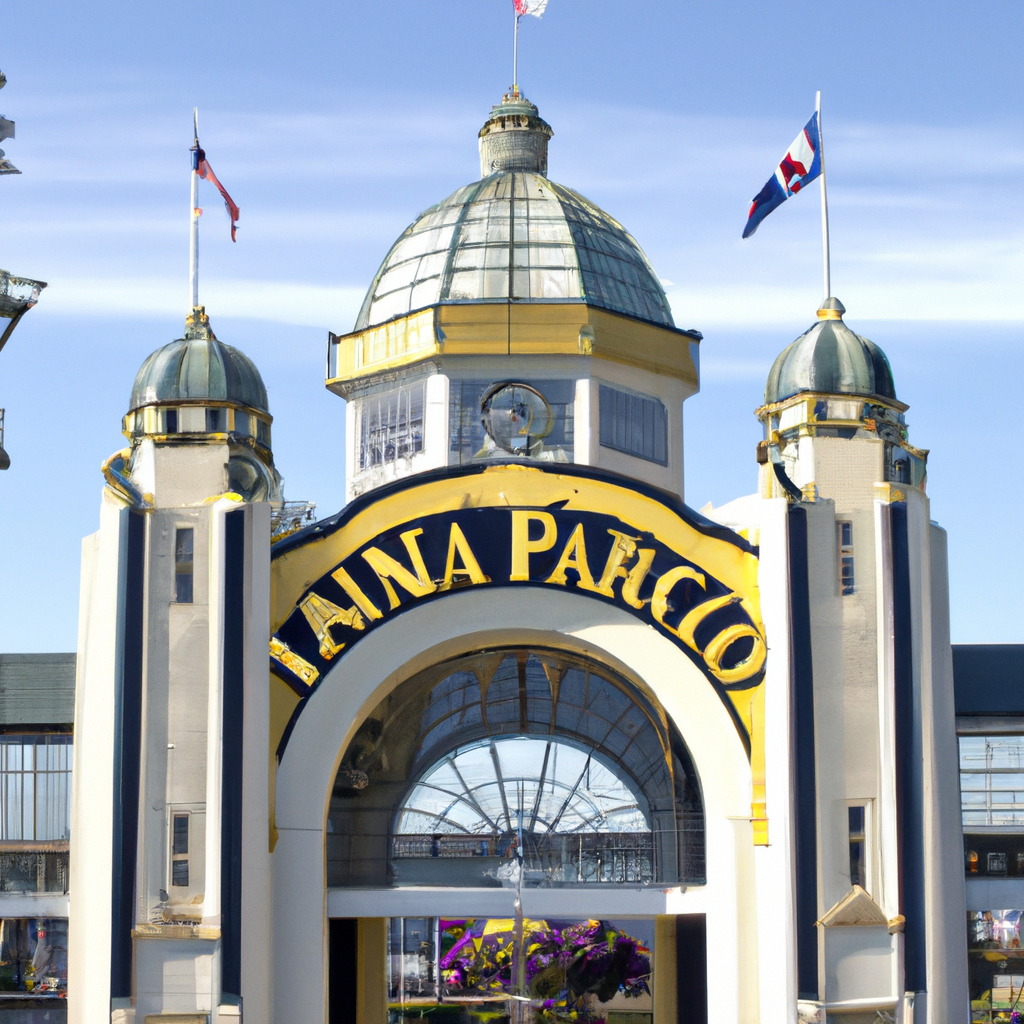Fortifications of Quebec National Historic Site - Quebec City, Quebec In Canada: Overview,Prominent Features,History,Interesting facts
Overview:
: The Fortifications of Quebec National Historic Site is the largest fortification system in North America and is the most outstanding example of a fortified colonial city in Canada. Located in Québec City, it contains the walls and four of the six original gates erected in the 18th century by the French and British to protect the city. Together, these walls, gates and 24 artillery positions form a remarkable and well-preserved archaeological site, which bears witness to the city’s long and varied history. The Fortifications of Quebec are an unparalleled reminder of the persistent conflict between the French and British as they strove to gain ascendancy in North America. The Walls of Quebec are a National Historic Site of Canada and are included in the Quebec City World Heritage Site. You can learn history, culture, and heritage through these magnificent monuments in Canada
Prominent Features:
One of the most prominent features of the Fortifications of Quebec National Historic Site in Quebec City, Quebec, is the city walls. These walls, which were constructed in the late 17th century, still stand today and have been a large part of the fortification system used to defend the city. The walls, which stretch for almost 4 kilometers (2.5 miles) are made up of limestone and granite, and were made to serve as a defence against attacks. Other notable features of the Fortifications of Quebec National Historic Site include the Citadelle of Quebec, which is a star-shaped fort built in the 1820s to serve as the city's main defence; the four remaining Martello Towers, which are 19th century fortifications that were used to protect the access points to the city; the Lévis Forts, which were built in the 1750s to defend the waterfront, and the Montmorency Park, a beautiful green space that offers stunning views of the St. Lawrence River. Overall, the Fortifications of Quebec National Historic Site is a great place to visit if you’re interested in learning about the history and culture of the city as well as explore its defensive structures. It gives visitors the chance to take a step back in time and experience the military prowess of the city in the past. This national monument of Canada portrays the history and culture of the country.
History:
Located in Quebec City, Quebec, Fortifications of Quebec National Historic Site is a significant portion of the historic fortified city. It represents nearly 400 years of military history in Canada, from the earliest European settlements in the region in 1608 to the present day. The fortifications stretch from the banks of the St. Lawrence River, on Cap Diamant, to the walls of the Old City. The story of Fortifications of Quebec National Historic Site began in 1608 when Samuel de Champlain founded the city of Quebec. He ordered the construction of a sturdy wall of logs along the rim of the Cap Diamant promontory, where the Roman Catholic Basilica stands today. The fortifications of Quebec City evolved over the centuries, particularly during the conflict between the French and the British, who came to occupy the city in 1759. The British forces made significant improvements to the existing wall, creating sophisticated defensive works. During the 19th century, the dominant military strategy shifted from walls and guns to more sophisticated developments such as the Citadelle, which was built in 1820-1830. The Citadelle, often called “The Gibraltar of the North”, became one of the most important strategic fortifications in North America. It is still in use today by the Canadian Armed Forces. The walls of the Old City were also strengthened in the 19th century. Further fortification defenses were constructed to protect the city against potential attacks from the United States during the War of 1812. The works included redoubts, bastions, and a number of defensive blockhouses. Today, the fortifications of Quebec City remain as a reminder of the city’s military past. Visitors can explore the site’s many historical landmarks and view its strongholds and fortifications. These fortifications are recognized as a “national treasure” and in 2008 they were designated a National Historic Site. You must visit one of these historical places in Canada on your Canada tour
Interesting facts:
1. Fortifications of Quebec National Historic Site was declared a National Historic Site of Canada in 1948 and is part of the UNESCO World Heritage Sites of North America. 2. It was mainly built by France, starting in 1661, to protect against attacks from British forces in the 17th and 18th centuries. 3. The fortifications of Quebec City original covered nearly 6.3 Km of land perimeters. 4. The walls of the fortifications are higher than 20 meters and each varies in thickness from 4 to 7 meters. 5. The main entrance of the fortifications, the Castle of St. Louis or the Porte St. Louis, was built in 1745 by the French Commander-in-Chief in New France, Gov. the Marquis de Vaudreuil. 6. The most famous battle in the history of the fortification was the Battle of the Plains of Abraham, which took place in 1759 and resulted in the British forces taking control of the fortifications. 7. Today, the fortifications are mostly open to the public and include a number of sites to visit, ranging from historical buildings to museums and art galleries. 8. The fortifications of Quebec City have been featured in many films and documentaries including "Les Misérables" (1998) and "Canada: A People's History" (2000). Visit one of the famous monuments of Canada with your friends and family.
Explore Canada most popular tourist destination with us. Fortifications of Quebec National Historic Site - Quebec City, Quebec In Canada: Overview,Prominent Features,History,Interesting facts,which is 35.14 km away from Canada main town, is the most popular destination to add in your travel wishlist.
-
City:
Canada
-
state:
Quebec
-
country:
Canada
-
country code:
CA
-
postcode:
133
Location:
Quebec Canada










.jpg)





